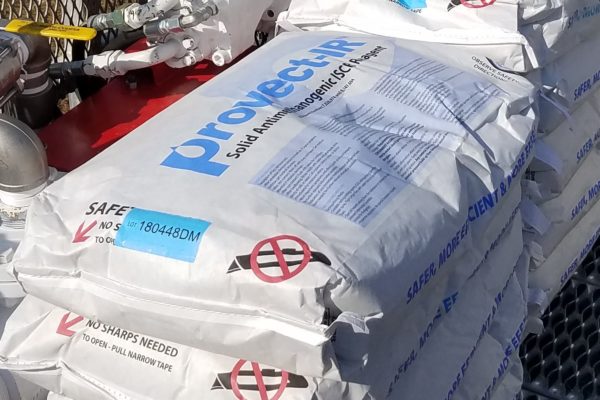Improved ISCR Reagent for Safer, More Efficient Remedial Actions
AEHS WEST COAST CONFERENCE March 23-26, 2015 San Diego, CA
By Jim Mueller (Provectus Environmental Products, Inc.), Mike Scalzi, Wade Meese (Innovative Environmental Technology, Inc.), Sidney Aluani, Eduardo Pujol (SGW Services, Brazil)
Over the past 25 years, many formulations of organic substrates, with or without zero-valent metals, have been added to impacted aquifers with the intent of liberating hydrogen to enhance reductive dechlorination reactions or help induce in situ chemical reduction conditions. A very common problem, however, is that indigenous methanogens often bloom following the addition of the organic hydrogen donors thereby liberating large amounts of methane gas. There are at least three important consequences of this response:
i) By utilizing hydrogen, the methanogens compete with dechlorinating microbes thus making inefficient use of the remedial amendment;
ii) Rapid growth of methanogens consumes alkalinity whil699e generating acids thereby having the potential for aquifer acidification (which may liberate heavy metals causing secondary contaminant issues); and
iii) Elevated methane concentrations can exceed current and pending regulations of < 10 to <28 ppm in groundwater and/or 0.5% v/v methane in soil gas (e.g., 10% of the LEL) and/or indoor air regulations (methane is flammable between 5 and 15% v/v).
We describe herein the use of a genuinely new ISCR reagent that uniquely combines nutrient rich, engineered-release, hydrophilic carbon sources + ZVI + other reagents along with a specially modified red yeast rice extract (RYR) as an inhibitor of enzyme systems that are responsible for the production of methane (US Patent 14268637; PCT/US14/36632). This improved ISCR Reagent contains natural monacolins (most importantly monacolin K, or lovastatin) which has the unique ability to block enzyme systems specific to methane production. The technology has been widely used in the cattle industry for many years to manage rumen microbiology, but is being newly applied to the environmental industry as a remedial supplement, a landfill gas management tool, et cetera. The modified RYR itself can be used as a stand-alone supplement to other ERD amendments such as molasses, sugars, EVO, et cetera to make them safer and to improve their overall efficacy.
Data from laboratory and field studies will be presented to demonstrate effective antimethanogenic activity during remedial actions. For example, when applied at ca. 40 mg/L the RYR reduced the concentation of methane in biogass from 65% to 0% within 5 days time without changing pH and maintaining reducing conditions < -300 mV. Field performance and cost data will also be presented to discuss the ability of the improved ISCR reagent to accelerate and improve remedial actions.
CONTACT :
Dr. Jim Mueller – Provectus Environmental Products | Email: jim.mueller@provectusenv.com

